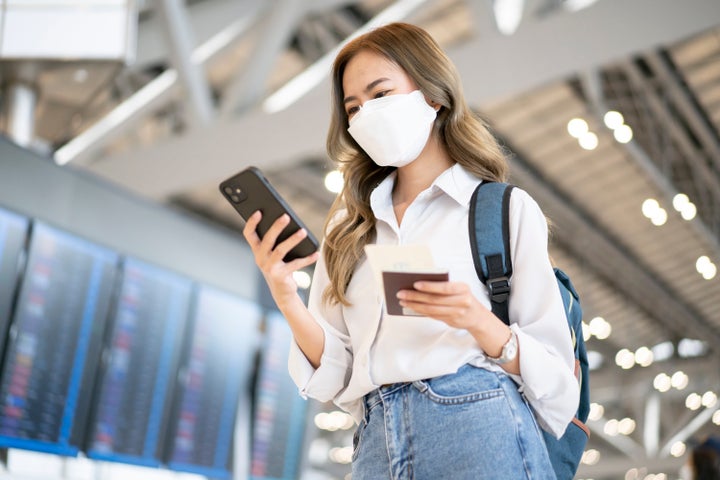
A member of independent Sage believes the UK is stuck in a cycle when it comes to dealing with spikes in Covid cases.
Christina Pagel, a professor of operational research at UCL, explained in a Twitter thread on Tuesday why the UK population is still getting infected (and reinfected) with Covid, more than two years into the pandemic.
It comes after the Office for National Statistics (ONS) confirmed that there have now been close to 200,000 deaths related to Covid since the start of the pandemic.
Around 50,000 of these deaths have happened since last summer, even though that’s when the majority of the country became fully vaccinated.
This suggests the pandemic is still having a serious impact on the UK, even though the government has ruled that we are now “living with” the virus.
So how are we stuck in a Covid loop?
Pagel’s chart explains that why living with “frequent mass Covid infections is a BAD IDEA”, because it becomes a negative feedback cycle for transmission.
She pointed out that Covid waves usually start within under-vaccinated groups which do a lot of social mixing, such as schoolchildren or young adults.
This then disrupts education, and usually leads to an increase of infections among pupils and teachers.
It soon spreads to parents and other age groups, meaning plenty of people have to call in sick to work either due to acute Covid, which causes economic disruption with a struggling workforce, or long Covid symptoms, which cuts down on worker numbers altogether.
Pagel said there’s then more pressure on remaining employees to work when sick, which leads to more general exposure to Covid and infection.
The virus can then mutate, and the cycle begins again.
She pointed out that while death rates right now remain low, hospital admissions are high, further stretching the NHS.
“High workplace absence and cost of living mean more people feel they have to work when sick. That plus barely any mitigations means more exposure and infection.
“And loads of infections means more chances for the virus to mutate further, more chances to find fitter versions.
“The virus evolves and drives more waves. Waves are closer together and higher in 2022 than in previous years.”
The specialist then concluded that the next wave in autumn is “inevitable” due to waning vaccine efficacy and as Covid evolves.
What can we do to curb cases now?
She said that while vaccines are effective at reducing exposure, we need additional measures to curb the virus’ transmission.
Pagel suggested asking infectious people to stay home “with good sick pay and support”, and “reduce impact of exposure through clean indoor air, masks, PPE where needed and prioritising outdoor living where possible”.
She said this is a more efficient measure to prevent infections, as it happens prior to infection.
Developing next generation vaccines will “also massively help to reduce exposure and impact”.
Other scientists have, once again, pointed to the need for vaccine equity – sharing the jabs around the world, rather than letting the wealthier countries take more than their fair share.
Madhukar Pai, professor and Canada research chair of epidemiology at McGill University, wrote in Forbes that a “staggering 2.6 billion people, a third of humankind” still haven’t received one dose of the Covid vaccine. Without vaccinations, there’s more space for Covid to mutate and evolve to become more deadly.
Similarly, the Covid technical lead at the World Health Organisation, Maria Van Kerkhove, tweeted: “It’s not over and we are playing with fire by letting the virus circulate at such intense levels.”
Pagel also tweeted an ominous warning about the current, dominant variant: “Despite Omicron being billed as ‘mild’ very soon we’ll have recorded more deaths in the Omicron era (6 mths so far) than in the Delta era (7 mths).”
Similarly, Professor Tim Spector of King’s College London and co-founder of the ZOE Covid app, tweeted that the cases logged through app users have reached a new record.
“Over 351,000 daily new cases on the Zoe app – that 1 in 15 people with the virus currently.
“Still rising across England but flattening in Scotland and Wales.”
However, he concluded: ”[Infections in] all age groups increasing but kids levelling so hopefully flat within a week.”